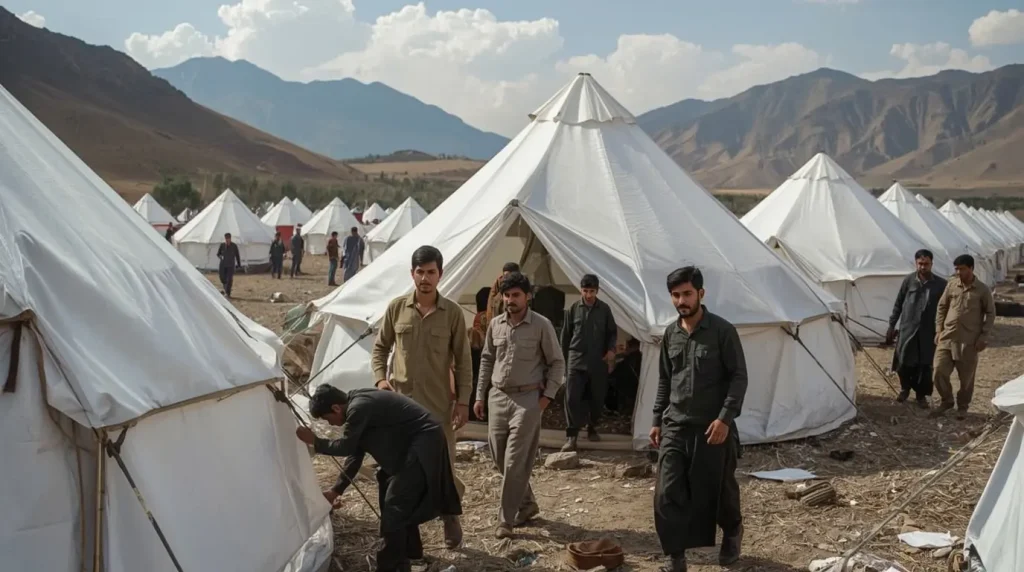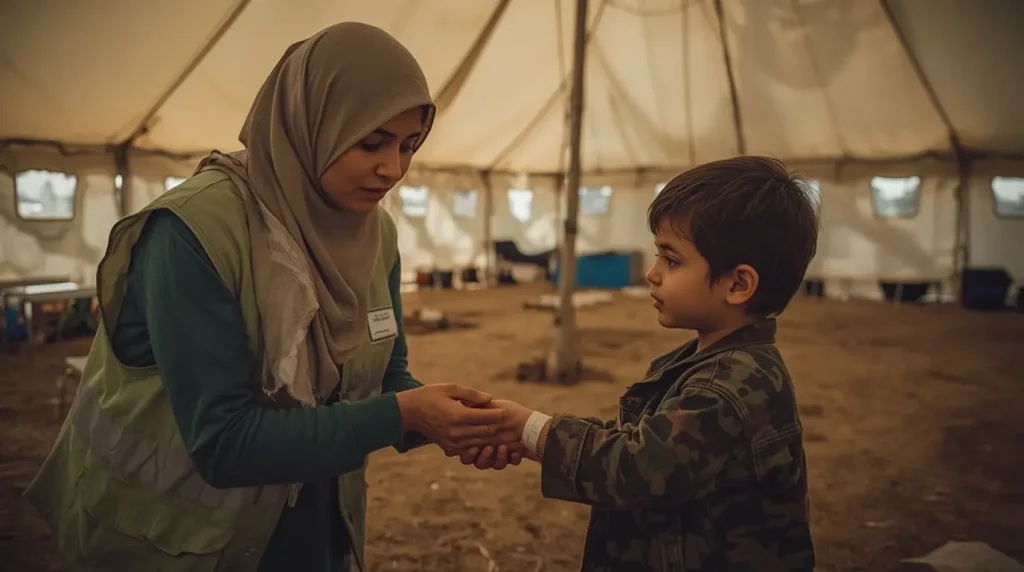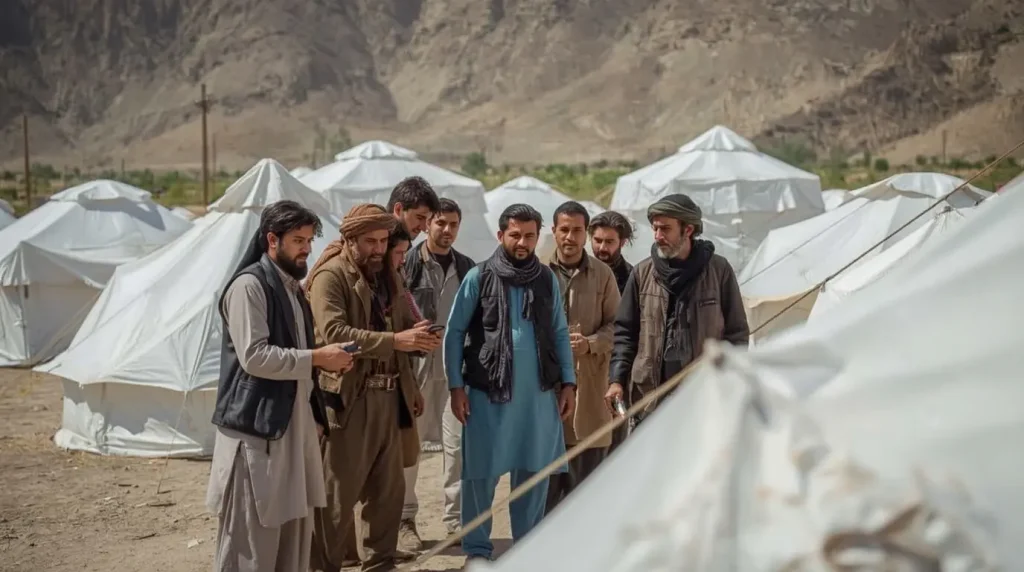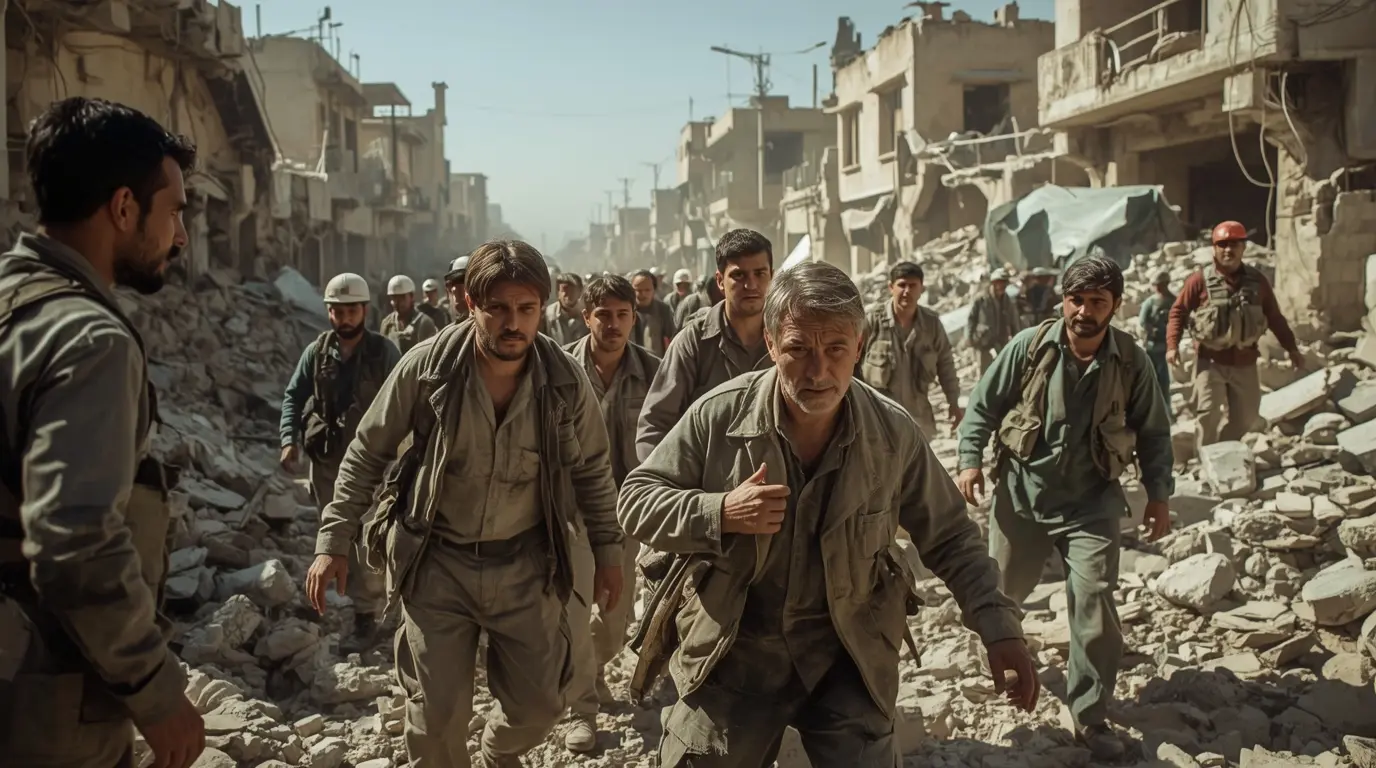Introduction: A Night of Trembles, A Dawn of Hope
When the clock struck midnight on September 1, 2025, the ground jolted violently beneath eastern Afghanistan, kicking off one of the worst humanitarian troubles the country has confronted lately. The Afghanistan earthquake soaring to a magnitude of 6.0, wrecked towns and set off a swift worldwide rescue effort. Authorities soon verified that the shock occurred close to Jalalabad, and the quake’s shallow depth forced shockwaves through the country’s rugged mountain country. This disaster has turned into one of the largest quakes the region has witnessed in years, showing that the world must pull together right away.
This blog keeps you updated about what has happened since the Afghanistan earthquake. We shine a light on the brave rescue teams working through every hour of darkness, the generous supplies and support pouring in from many nations, and the difficult, mountain-road toward helping the communities stand tall once more. Instead of sharing graphic images, we show the unstoppable courage of ordinary people and the powerful teamwork rising from every sector to defeat nature’s rage.
The Immediate Aftermath and Scale of the Afghanistan earthquake
When the quake hit Afghanistan, the first seconds were filled with panic and an urgent need for facts. The tremor struck just after midnight, and families, already in bed, felt the jolting shock. The provinces of Kunar and Nangarhar, with their steep, rocky mountains, were the worst hit and the hardest to assess.
With towers and antennas down, no one could get messages in or out. The steep track roads, barely safe even in good weather, were quickly buried under mudslides.

Because of this, rescuers couldn’t see the entire level of destruction for many hours. Early updates from village leaders warned that whole communities were in ruins; when dawn broke, the full tragedy was laid bare, showing houses that had crumpled and streets that were silent.
The Heroic Domestic and International Response to the Afghanistan earthquake
The continent was instantly united in compassion as the scene of the Afghanistan earthquake unfolded. Afghan villages gave the first and most courageous help. In candle-light villages and in the bright of dawn, men and women lifted stones and beams with their bare hands to free their neighbors, showing the kind of courage that scenes of affection that will echo for generations.
Afghanistan’s officials wasted no time pulling together every resource they could find. The defense ministry quickly ordered several helicopter missions to fly into the hardest-to-reach regions. These aircraft have turned into essential lifelines, airlifting the injured to hospitals in Jalalabad and Kabul while also dropping in the first loads of clean water, food, and emergency medical supplies. The helicopters are literally saving lives every hour.
On the global stage, the response has been no less urgent. The United Nations is working one-on-one with local groups, while its specialized agencies—the World Health Organization (WHO) and UNICEF—move rapidly to get emergency shelter, clean water, and medical care to the hardest-hit areas. These agencies are especially focused on stopping new health crises from developing after the quake. Major international charities, including the Red Cross and Red Crescent, and Islamic Relief, have all turned on their emergency plans, sending in teams and tons of supplies to back up the local and national efforts.

Together, the action from Afghan authorities and the international community shows a powerful collective pledge to ease the terrible suffering caused by the Afghanistan earthquake and ensure that every person in need gets the help they deserve.
Grasping the Crisis: What Makes the Region So Exposed
To truly see the Afghanistan earthquake’s effect, we must first grasp the built-in weaknesses of the land. The country lies on a tectonic boundary where the shrinking Indian plate runs into the sluggish Eurasian plate. This steady squeeze warps the Hindu Kush, keeping earthquakes inevitable.
But the front-line damage comes not just from tectonics. The way people live here magnifies that risk. The houses of the hardest-hit villages are still built from unreinforced mud-brick and handmade stone. Artfully built and passed down for generations, they still cave in under even moderate shaking, and even a minute’s Afghanistan earthquake levels a street of them in seconds.
These brittle homes emerged from a poverty that screens direct aid, steady jobs, and hard walks in the mountains from even mild hopes for secure buildings or professionally trained rescue teams. Afghanistan’s ground is laced with broken passes that the highest mountains trap on either side. Getting teams in, and once in, getting concrete and water to the villages, is its own swift tectonic problem. Road crews make damage even wearily long in rebuilding; the shaking leveled the rest, and broken homes leave families sware escaping.
The Road to Recovery: What Happens Next?
Recovering from the Afghanistan earthquake will take a long time. Search and rescue teams working against the clock will soon hand the mission to experts in rebuilding and recovery. The scale of what they face is huge.
- Emergency Shelter: The Afghanistan earthquake left tens of thousands of people without roofs over their heads. Delivering strong tents, tarps, and thermal blankets is the top priority so families are shielded from freezing temperatures.
- Medical Services: To care for the injured, deliver maternity care, and fight contagious illnesses from muddy water and cramped conditions, teams are setting up field hospitals and mobile clinics.
- Water, Sanitation, and Hygiene: Safe drinking water, clean latrines, and toilet facilities will stop diseases from spreading. Making sure people have access to these is crucial for public health.
- Food Security: Many farmers have lost livestock, seeds, and harvesting equipment, and routes to city markets are blocked. Distributing enough food, including nutritional support for babies and pregnant women, is vital.
- Psychosocial Support: Many survivors, especially children, carry deep trauma. Mental health workers and social counselors will soon step in to help families cope and recover from the Afghanistan earthquake.

Long-term rebuilding will need the ongoing support of the world community. Teams will work to create stronger houses and roads that are designed to stand up to future earthquakes. The hope is to “build back better” so that people are less exposed to risk the next time a quake strikes.
How You Can Help: Supporting the Victims
When the Afghanistan earthquake flashes across your social feed, the urge to step in and do something is completely understandable—and it’s the right instinct to follow. Money, not hundreds of items, is what the survivors need right now. Sending cash to trusted humanitarian agencies that are already operating in the field is the quickest, safest, and smartest way to make your caring actually count. These groups already know the lay of the land, how supply chains work, and how to get food, medicine, and shelter to people who have lost everything.
Spend a few minutes checking agencies that have a track record in disaster response. Some of the most credible names include:
- The Red Cross and Red Crescent Societies
- UNICEF
- The World Food Programme
- Islamic Relief
- CARE International
- Other vetted non-profits that have a field presence
Each of these organizations is rolling out aid right now. Whether they’re setting up tents, handing out cash grants, or serving hot meals, your gift kick-starts these good deeds and keeps them rolling.
Conclusion: A Test of Resilience and Global Solidarity
We can’t decide when the next quake, flood, or storm will strike, but we can choose who we stand beside when it does. The Afghanistan earthquake of September 2025 lays bare both the force of natural disaster and the resolve of the global community that rushes to stand with those who are hurting. Photos of flattened villages and quiet, lost voices haunt the news. Yet we can write a different ending. Your caring is the lifeline that guides the next step forward, the step from rubble to recovery. Please give people a chance to rebuild, and do it today.
Even among the shattered buildings, the people of Afghanistan are showing amazing strength, bravery, and kindness as rescuers from all over the world quickly arrive. The sight of local volunteers and foreign teams working side by side reminds us of the very best of humanity. Although the road to recovery from the Afghanistan earthquake will be long and hard, the quick and united response to the earthquake proves that we are all committed to helping Afghanistan rebuild. Everyone everywhere is watching closely, and keeping that support going will be the most important thing in the upcoming weeks and months.
For more incredible stories of everyday news, return to our homepage.




